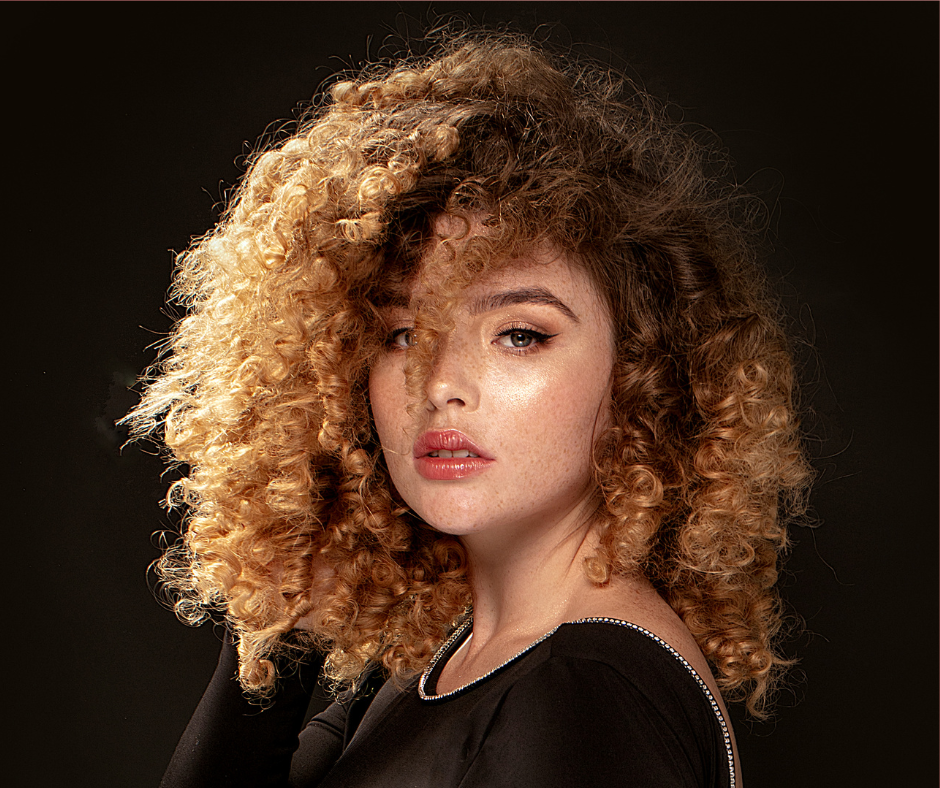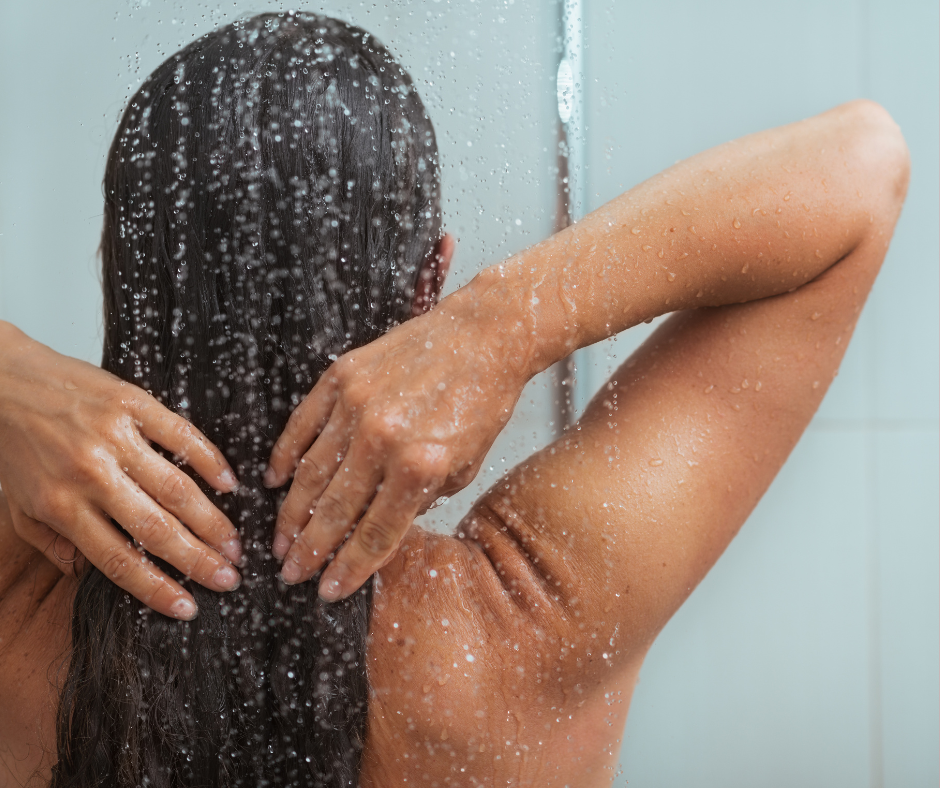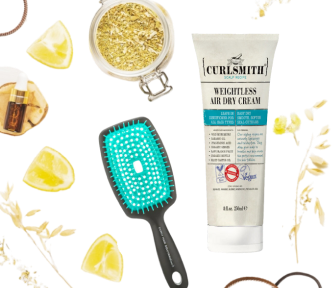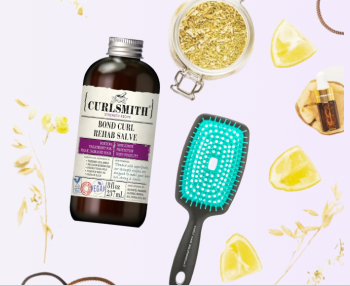Porosity has a lot to do with the health of your hair. The higher the porosity, the more fragile and prone to damage your strands can be. The most common reasons for having high porosity hair are colouring it or frequently using heat in styling.
But here’s the thing: studies show that genetics play a role in hair porosity, so your hair might naturally be on the more porous side without actually being damaged.
High porosity hair definitely has its quirks, which means it needs a bit of special care. And that’s exactly what we’ll be going over here!
Why Does High Porosity Hair Need Special Care?
To really understand why high porosity hair care differs from low porosity hair care, it helps to look at the structure of hair itself. At the very center is the medulla (though not every hair type has it, especially finer strands). Around that is the cortex, which gives hair its strength and elasticity. The cortex also holds melanin, which gives hair its colour, and keratin proteins, which make up most of its structure and weight. Protecting it all is the cuticle, a thin outer layer made up of overlapping scales.

The cuticle’s main job is to guard the cortex from damage. When it’s healthy, it lies flat and works like a shield. But when it becomes cracked, raised, or worn down, the cortex underneath is left exposed. That’s where porosity comes in.
Porosity is simply your hair’s ability to absorb and hold on to moisture, and it all comes down to the condition of your cuticle. A useful way to picture it is to think of your cuticle as roof shingles. On a solid roof, the shingles are smooth and tightly in place, keeping everything inside protected. On an older or damaged roof, some shingles are broken or missing. Water seeps in, heat escapes, and the house becomes harder to maintain.
High porosity hair works similarly. The “roof” of the cuticle has been weathered and weakened, which means moisture gets in quickly but slips out just as fast.

Characteristics of High Porosity Hair
You’ve probably heard of at-home porosity tests like the float or water test, but they can be pretty unreliable. To really measure porosity, scientists use lab tools like spectroscopic imaging or gas adsorption analysis.
The good thing is, you don’t need a lab to figure out if your hair is highly porous. High porosity hair characteristics show up in ways you can notice day-to-day.
Here are some of the common signs:
-
Colour fades quickly. If you dye your hair, you might notice that the colour doesn’t last long. That’s because a porous cuticle struggles to hold onto pigment.
-
It soaks up water fast. Highly porous strands get drenched almost instantly in the shower. On the flip side, they also dry much faster, sometimes within just a few minutes to hours.
-
Products absorb quickly. Oils, butters, and creams sink in right away, and deep conditioners often make a dramatic difference in how your hair feels.
-
Hair can look dull or rough. Even when you’re using products, the surface of the hair may not reflect light well, so it lacks shine.
-
It feels uneven. If you run your fingers down a strand, it might feel bumpy or jagged instead of smooth.
-
Tangles happen often. Lifted cuticle layers can catch on each other, which makes knots and tangles more common.
Best Care Routine for High Porosity Hair
As porosity increases, the cuticle develops tiny cracks, gaps, and lifted scales that let water and other small molecules, such as amino acids, move in and out of the inner layers of the hair.
The biggest problem for high porosity curls is that they'll struggle to hold onto moisture, leaving hair dry, brittle, and prone to breakage.
Caring for it is all about sealing in hydration, protecting the strands, and maintaining balance. The goal is to let moisture in, then help your hair hold onto it for as long as possible.
Here are some ways to make that happen:
1. Reach for Richer Products
Heavier stylers with sealing oils (like castor, olive, or coconut) and nourishing butters (such as shea, cocoa, or cupuaçu) help trap moisture by sitting mostly on the surface of the hair and create a barrier to slow down water loss. They don’t penetrate deeply into the strand; they “seal” what’s already inside. If your hair is on the finer side, use these in small amounts so they don’t weigh your curls down.
2. Deep Condition Regularly

Your hair will love it! Try to deep condition about once a week. A protein-rich deep conditioner is a great way to give your hair both moisture and strength. You can spot these by looking for labels that say “strengthening” or “reparative". You can also alternate between a deeply hydrating conditioner and a protein-based one.
Here are a few deep conditioners you should absolutely check out:
3. Limit Clarifying!
Aim to clarify just once a month, because harsh sulphates and high porosity hair do not go well together. Grab a mild sulphate-free shampoo like the Jessicurl Gentle Lather Shampoo or the Inahsi Naturals Soothing Mint Sulfate-Free Gentle Cleansing Shampoo, they’ll get the job done. You can even consider using a co-wash for most of your washes, and always follow up with a conditioner.
4. Layer Your Products
If you had to choose between curl creams and lightweight leave-ins, go for a curl cream. A cream-based formula usually provides more hydration and helps manage frizz better. But your best bet is to layer your products. For high porosity hair, the LCO (leave-in, cream, oil) method works really well. Start with a leave-in conditioner to hydrate, follow with a curl cream, and finish with a sealing oil to lock in all that moisture.
5. Refresh between Washes

High porosity curls can dry out quickly, so don’t wait until wash day to add moisture back in. Lightly mist your hair with water and reapply a small amount of conditioner or curl cream (this is a must - adding just water to your hair may dry it out further as strands swell when wet) midweek to revive definition and keep your strands soft. You can also use a refreshing mist like the Up North Naturals Freshen Up Hair Mist or the Inahsi Naturals Moisture Supreme Fragrance-Free Leave-in Hydrating Mist.
6. Silicones may actually benefit you
While they get a bad rap in the curl world, silicones can actually be very useful for high porosity hair. They form a lightweight barrier on the hair shaft that helps slow down moisture loss and protect against frizz, heat, and humidity. If you're concerned about build up, look for water-soluble silicones in products like AG Hair Fast Food Leave-in Conditioner.
7. Use Repair Treatments
Bond-repair products like Olaplex (available in store) or K18 work by strengthening the weak spots inside your hair. They help reinforce and repair damage, making your strands stronger and less likely to break or split. If you're interested in one specifically designed for curly hair, check out the Curlsmith Bond Curl Rehab Salve, one of our top-selling products for high porosity hair.
8. Protect Your Hair from Damage
High porosity hair is naturally more delicate, so it really helps to handle it gently. Detangle slowly with a wide-tooth comb or your fingers, ideally when your hair is coated in conditioner.
If you do need to use heat, always use a heat protectant and keep the temperature on the lower side. And don’t forget your hair when you’re out in the sun, as UV rays can wear down the cuticle too. Consider wearing a hat or sitting in the shade to protect your high porosity curls from UV damage.
Need help finding products for your high porosity hair? You can find our High Porosity Favourites here, or we can provide personalized suggestions in store or via email at help@curlwarehouse.com.








